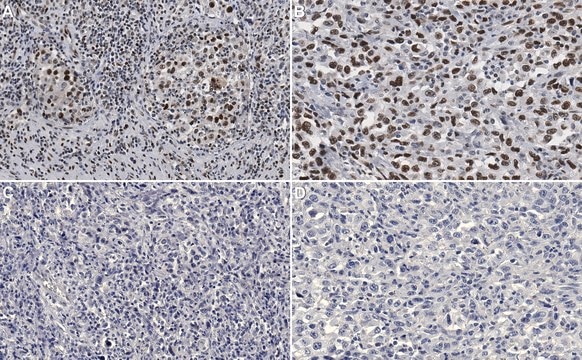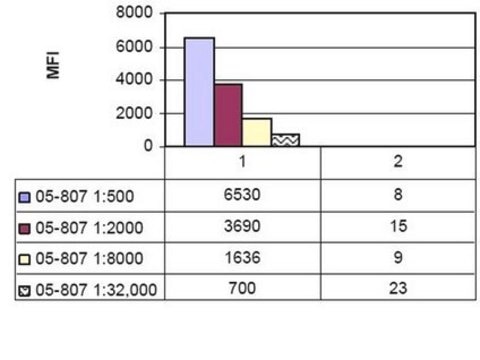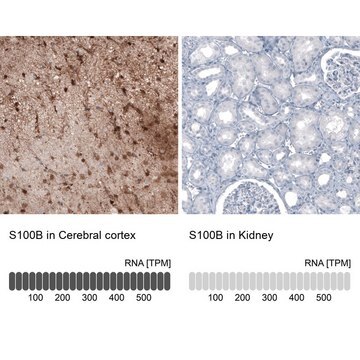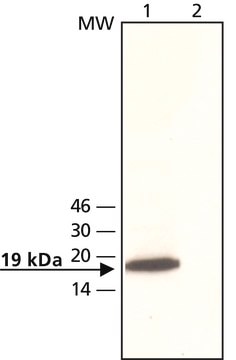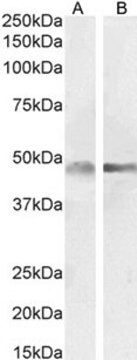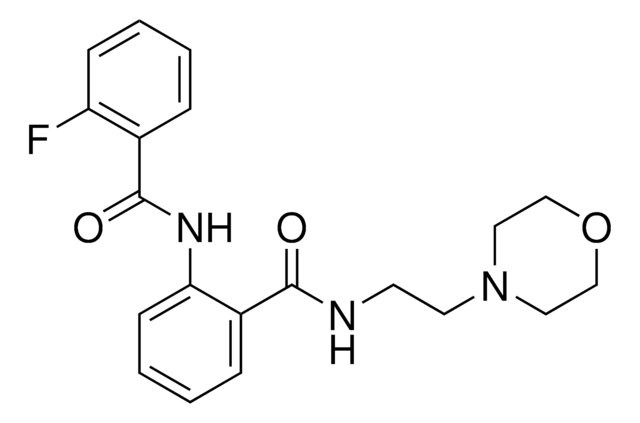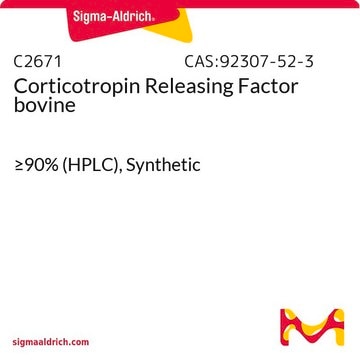04-767
Anti-CREB Antibody, clone NL904, rabbit monoclonal
culture supernatant, clone NL904, Upstate®
Sign Into View Organizational & Contract Pricing
All Photos(1)
About This Item
UNSPSC Code:
12352203
eCl@ss:
32160702
NACRES:
NA.41
Recommended Products
biological source
rabbit
Quality Level
antibody form
culture supernatant
antibody product type
primary antibodies
clone
NL904, monoclonal
species reactivity
rat, mouse, human
manufacturer/tradename
Upstate®
technique(s)
immunoprecipitation (IP): suitable
western blot: suitable
isotype
IgG
NCBI accession no.
UniProt accession no.
shipped in
dry ice
target post-translational modification
unmodified
Gene Information
human ... CREB1(1385)
General description
CREB is a beta ZIP transcription factor that activates target genes through cAMP response elements. CREB is able to mediate signals from numerous physiological stimuli, resulting in regulation of a broad array of cellular responses. While CREB is expressed in numerous tissues, it plays a large regulatory role in the nervous system. CREB is believed to play a key role in promoting neuronal survival, precursor proliferation, neurite outgrowth and neuronal differentiation in certain neuronal populations. Additionally, CREB signaling is involved in learning and memory in several organisms. CREB is able to selectively activate numerous downstream genes through interactions with different dimerization partners. CREB is activated by phosphorylation at Ser133 by various signaling pathways including Erk, Ca2+ and stress signaling. Some of the kinases involved in phosphorylating CREB at Ser133 are p90RSK, MSK, CaMKIV and MAPKAPK-2.
Specificity
Broad species cross-reactivity expected due to sequence homology
Recognizes CREB.
Immunogen
Epitope: a.a. 5-24
peptide (C-SGAENQQSGDAAVTEAENQQ) corresponding to amino acids 5-24 of human CREB
Application
Detect CREB also known as cAMP-response Element Binding Protein with Anti-CREB Antibody, clone NL904 (Rabbit Monoclonal Antibody), that has been demonstrated to work in IP & WB.
Research Category
Epigenetics & Nuclear Function
Epigenetics & Nuclear Function
Research Sub Category
Transcription Factors
Transcription Factors
Quality
Routinely evaluated by immunoblot on HeLa nuclear extract
Target description
Mr ~43 kDa
Linkage
Replaces: 04-218
Physical form
Cultured supernantant in 0.05% sodium azide
Storage and Stability
Stable for 1 year at -20°C from date of receipt.
For maximum recovery of product, centrifuge the vial prior to removing the cap. It is suggested product be sub-aliquoted to avoid repeated freeze / thaw cycles.
For maximum recovery of product, centrifuge the vial prior to removing the cap. It is suggested product be sub-aliquoted to avoid repeated freeze / thaw cycles.
Analysis Note
Control
Positive Antigen Control: Catalog #12-309, Hela cell nuclear extract. Add an equal volume of Laemmli reducing sample buffer to 10 μL of extract and boil for 5 minutes to reduce the preparation. Load 20 μg of reduced extract per lane for minigels.
Positive Antigen Control: Catalog #12-309, Hela cell nuclear extract. Add an equal volume of Laemmli reducing sample buffer to 10 μL of extract and boil for 5 minutes to reduce the preparation. Load 20 μg of reduced extract per lane for minigels.
Legal Information
UPSTATE is a registered trademark of Merck KGaA, Darmstadt, Germany
Disclaimer
Unless otherwise stated in our catalog or other company documentation accompanying the product(s), our products are intended for research use only and are not to be used for any other purpose, which includes but is not limited to, unauthorized commercial uses, in vitro diagnostic uses, ex vivo or in vivo therapeutic uses or any type of consumption or application to humans or animals.
Not finding the right product?
Try our Product Selector Tool.
wgk_germany
WGK 1
flash_point_f
Not applicable
flash_point_c
Not applicable
Certificates of Analysis (COA)
Search for Certificates of Analysis (COA) by entering the products Lot/Batch Number. Lot and Batch Numbers can be found on a product’s label following the words ‘Lot’ or ‘Batch’.
Already Own This Product?
Find documentation for the products that you have recently purchased in the Document Library.
Inhibition of GPR30 by estriol prevents growth stimulation of triple-negative breast cancer cells by 17?-estradiol.
Girgert, R; Emons, G; Grundker, C
BMC Cancer null
Xiao-Wen Yu et al.
eLife, 6 (2017-01-05)
The molecular mechanisms underlying age-related cognitive deficits are not yet fully elucidated. In aged animals, a decrease in the intrinsic excitability of CA1 pyramidal neurons is believed to contribute to age-related cognitive impairments. Increasing activity of the transcription factor cAMP
Lídia Cantacorps et al.
British journal of pharmacology, 177(5), 1090-1105 (2019-11-11)
Alcohol exposure in utero may lead to a wide range of long-lasting morphological and behavioural deficiencies known as fetal alcohol spectrum disorders (FASD), associated with a higher risk of later developing neuropsychiatric disorders. However, little is known about the long-term
Our team of scientists has experience in all areas of research including Life Science, Material Science, Chemical Synthesis, Chromatography, Analytical and many others.
Contact Technical Service